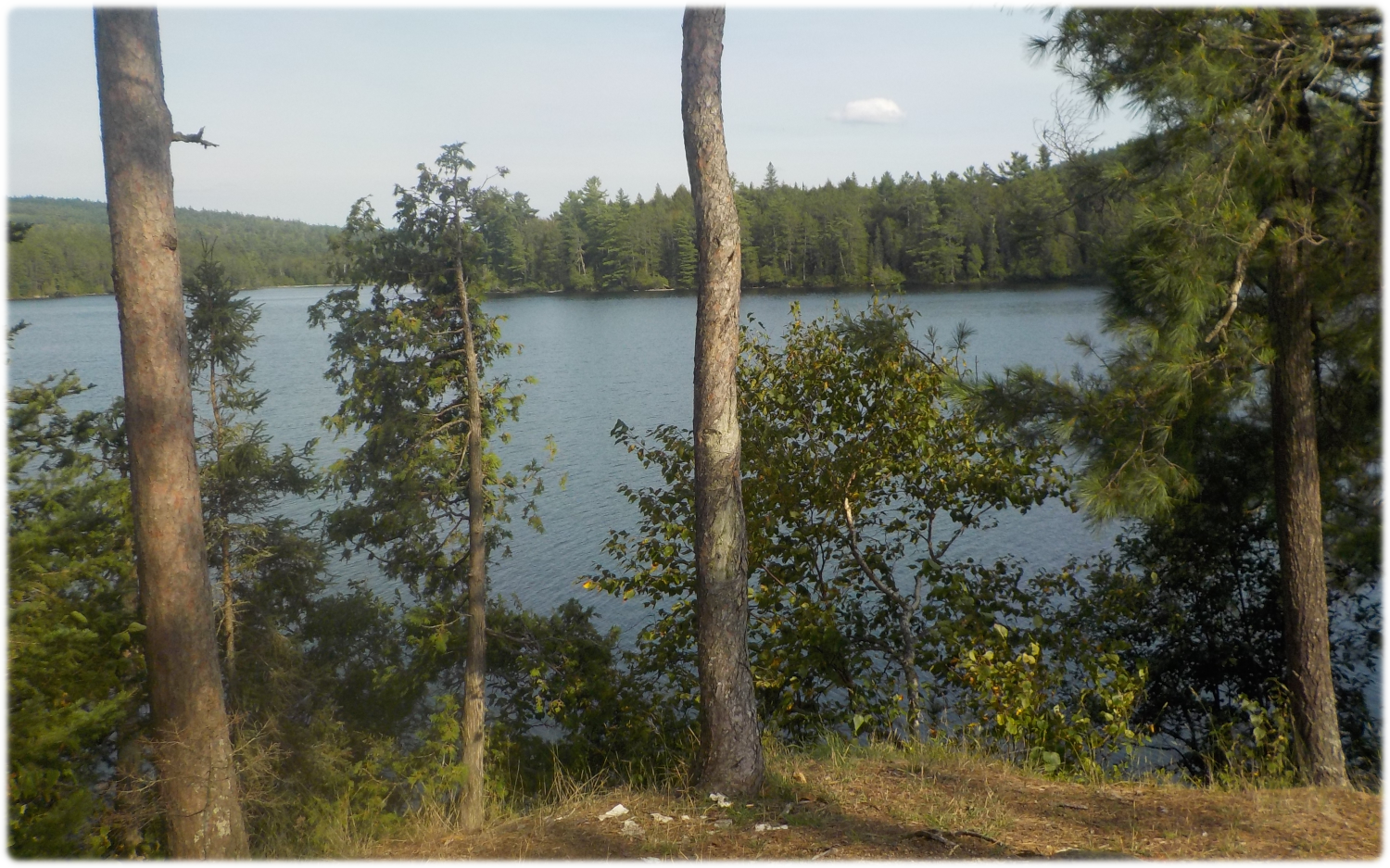Dinner and Overnight Storm
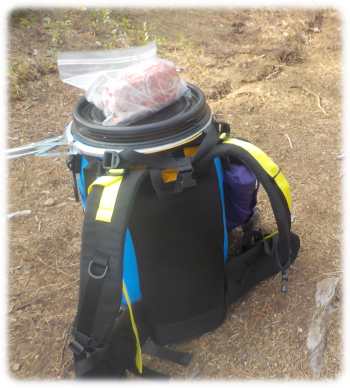
We planned mostly fresh food for the first night's dinner. Steaks were frozen in several layers of wet newspaper, and we had broccoli that was in our fridge that morning. We also had powdered mashed potatoes, not fresh but they are tasty.
I brought newspaper for starting fires, but will probably not do this next time. There were enough dry twigs and needles around that I think we would have been OK. The paper easily fit in the bottom of the food barrel, but I thought about the extra weight every time I picked up that thing.
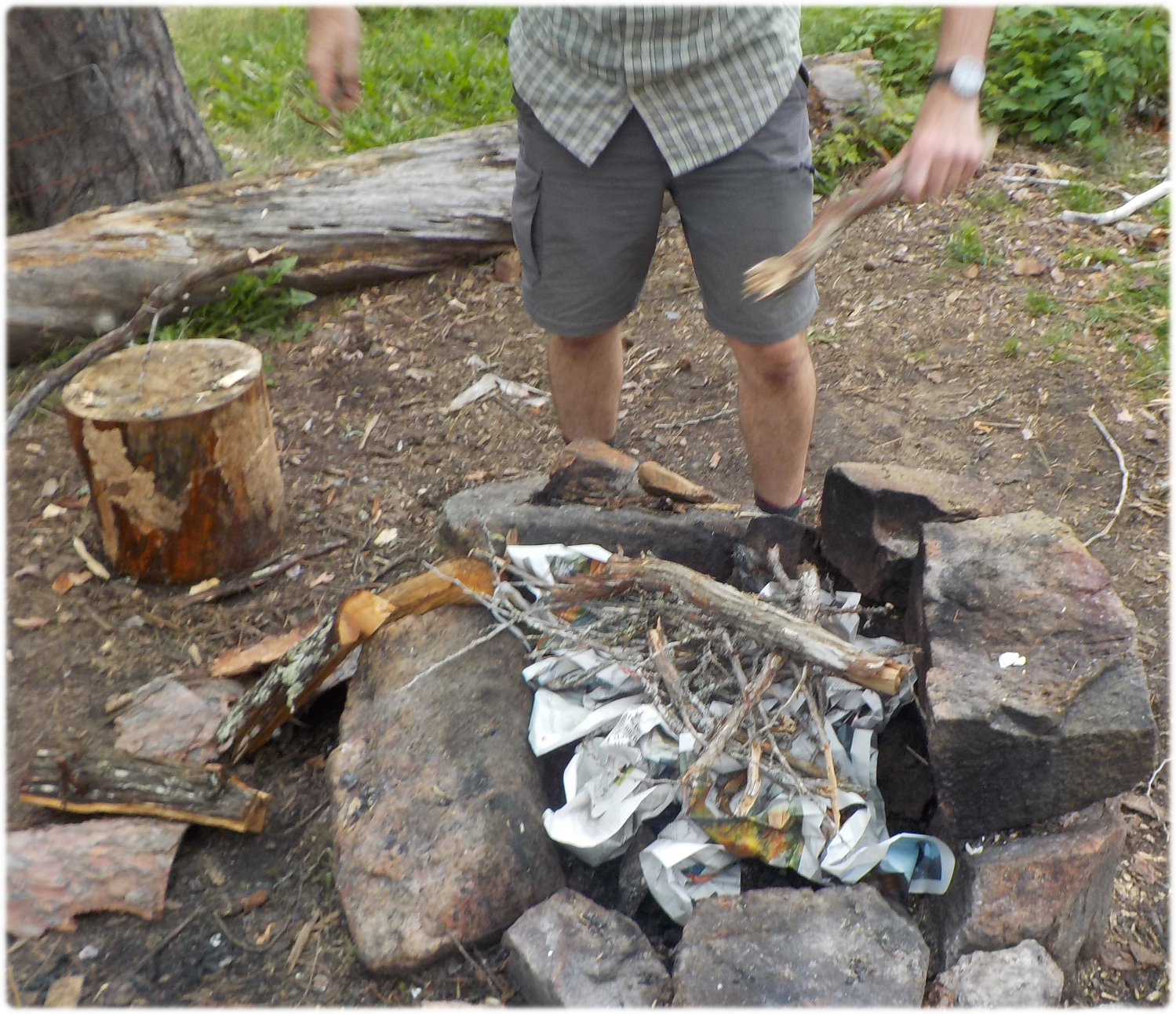
The fire started well and we used some foil on the campsite grill for the steaks. Pots for broccoli and potatoes went on logs at the edge of the fire. This worked great, but did leave a sticky residue on the outside of the pots, pitch from the tree I think.
There are no pictures of food on the fire — once things got going, they happened quickly! Cooking a three-item meal while tending the fire took all our concentration. The process was also complicated by a pesky squirrel that showed up as soon as food was out. Putting food down anywhere would immediately summon the red squirrel and we would get an earful when trying to scare him away. I don't think squirrels even eat cows.
Cooking Mistakes
A few things to change for the next time. I made the mistake of using cold water to rehydrate the potatoes, which meant the mixed potatoes needed to be heated on the fire. It would have been easier to boil water and then stir that hot water into the flakes. We might even have used the water that was boiled for the broccoli.
Too Much
Another mistake was quantity. It is better to have too much than not enough, but this was too much of the too much. We had two steaks, about 350g each but would have been OK with 500g total. Katherine wasn't able to finish her already smaller portion, William and I were overly full too.

Dishes
Katherine's enthusiastic attitude for all camp activities continued to dishes. Over the winter I had learned about low-impact dishes from Mark Rubino on Matt Haughn's YouTube series, Mark in the Park, and it sounds like a good idea to me.
The previous fall we did the dishes with biodegradable soapy water in a pot near the lake, then threw the last bits in for the fish to eat. What I learned from the video is that this is an "outmoded" practice. The special camp soap is biodegradable, but it isn't fast, it could take several months or years to break down properly. By dumping the grey water far from the lake, it has a chance to filter through the ground before eventually returning to the lake as clean water. I took a small folding shovel to help with digging a small hole for this.
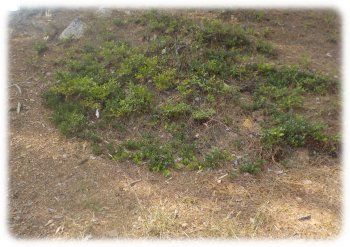
We found some ground that was far from the lake, and dug a small hole. Because the island is so small, this wound up right beside the thunderbox. We were careful not to dig too far — the thunderbox gets moved during campsite maintenance.
I used a small dollop of soap on the scrub pad and then used that on the dishes. With a pot for fresh hot water and a pot for the grey water it didn't take very long. We dumped the water into the hole then filled it and spread pine needles over to make it look like the rest of the area. We were happy with the results, and used Mark's system for the rest of our trip too.
Moving House
After dinner we reviewed the site and realized that the tree hanging over our tent had a large rotten area low on the trunk. So rotten that there was a hole right through the tree. The tree was leaning right over our tent, there was no doubt where it would fall if we happened to get a wind storm.
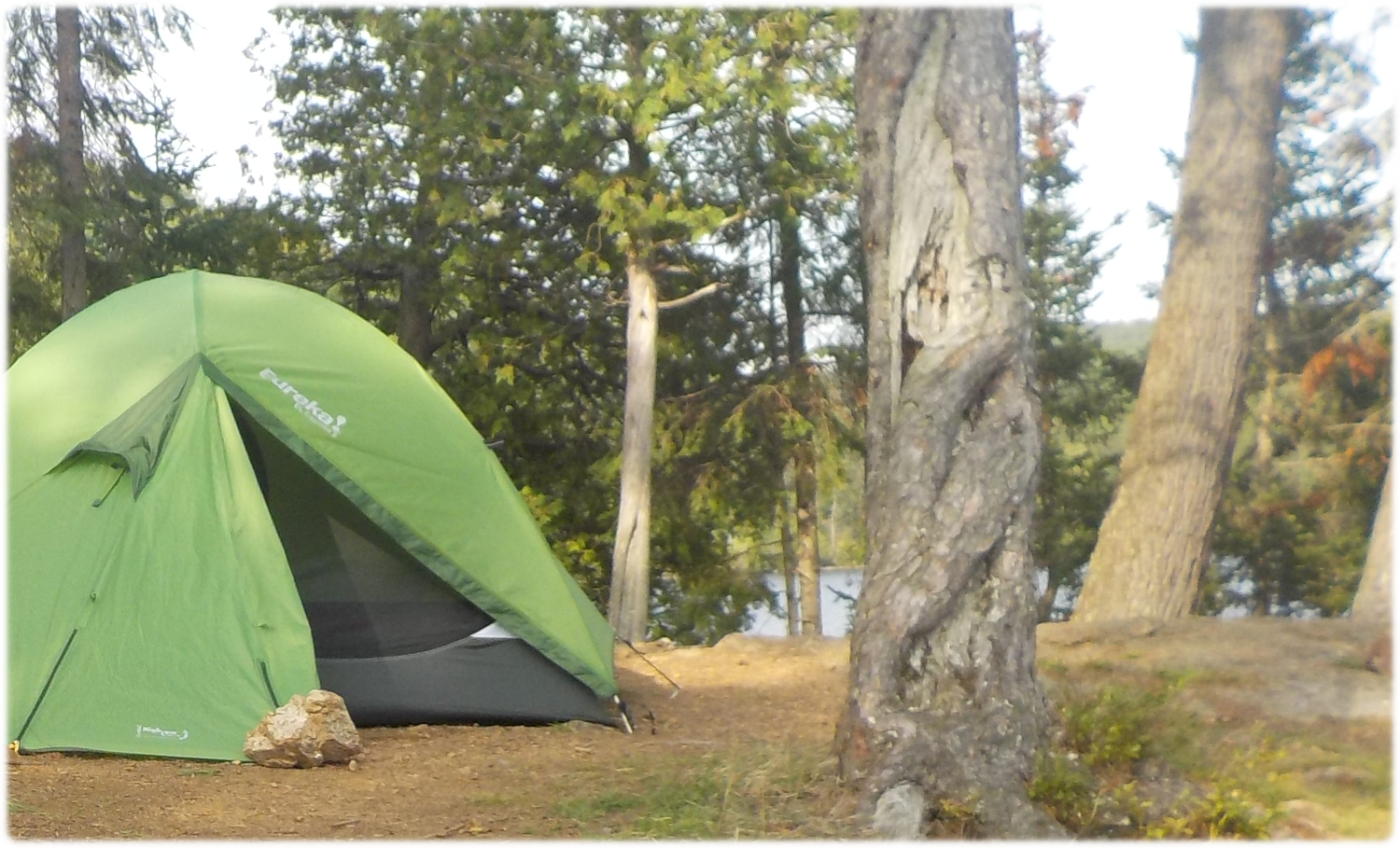
We pulled the pegs and then moved the tent about six feet — far enough that it would miss all of us if it did fall. For the rest of the trip, we remembered to look for hanging trees before setting up the tent.
Squirrel Invasion and Barrel Hang
The normal practice in Algonquin is to hang food overnight. The reason is usually described as deterring bears, although it is also good at keeping small critters away.
Our island didn't have many good places to hang the barrel so I decided we could skip it for this night. Putting the food in a tree wouldn't stop the smell, and if bear decided to swim all the way to our island, I would rather she eat the food in the barrel instead of the "food" in the sleeping bags.
We did take it as far from the tent as we could (thunderbox area again). The barrel seals with a metal ring, but this was the start of the trip, and not all the food would fit inside yet. There was some trail mix in locking tupperware containers, which we left strapped to the top of the barrel.
The barrel was the last of the jobs, so we took some time relaxing by the fire. After twenty minutes we noticed that the pesky squirrel was not so pesky anymore... Eventually putting two and two together we found him working away at our tupperware snack. By the time we investigated there was a mess of blue plastic bits where he had been eating right through the container. I guess that squirrels love the smell of nuts, who knew? ☺ He had made tremendous progress, but not enough to get into our snacks.
That barrel had to get hung! We started to look for any branch that could work and found a tree with a branch hanging over the water that would do. Getting the rope over the branch was as smooth as normal, about a dozen tries (so long that even Katherine got bored and went to read in the tent). William and I pulled up the barrel and that was the last time we heard from that critter until breakfast.
Waste Burning
The kids headed to the tent to read and I stayed out to watch the rest of the fire. We still had damp newspaper that was used to wrap the frozen steaks. I burned all of this by separating the sheets and putting a few on the fire at a time. I also burned the steak juices off the foil, then crumpled the remains of the foil to pack out with the rest of our garbage.
The lake was very still, but the temperature had gone up and it was getting quite muggy — the thermometer read 28°C. This was a nice surprise for September weather.
I eventually doused the fire and went join the kids in the tent. Because of Katherine's earlier homesickness, she got to use the Spot device to send our first evening's "We're OK" message.
Lights out around 8:45pm.
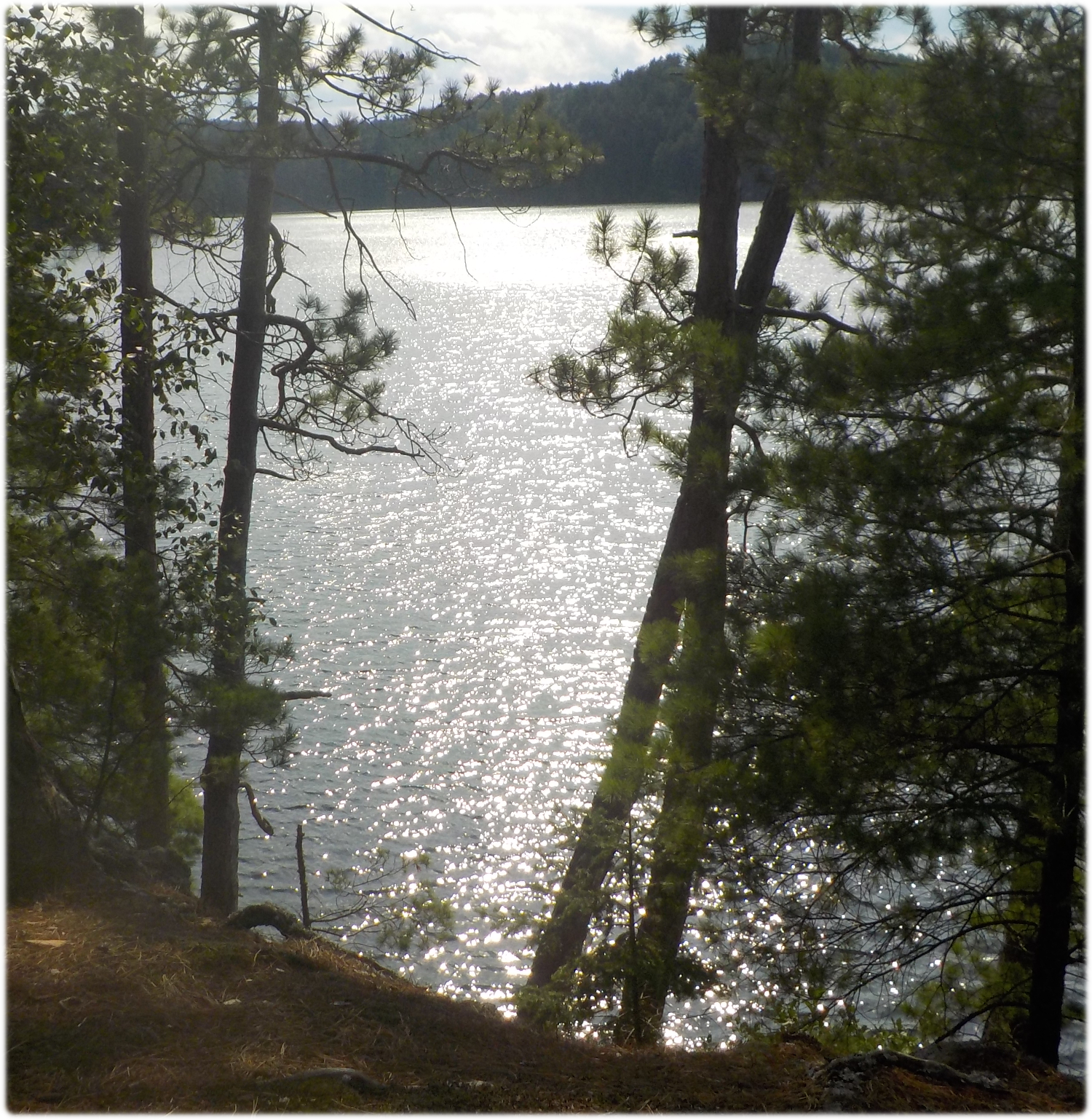
Overnight Storm
Sometime in the middle of the night I was awoken by thunder. There was also rain and some wind on the tent. I listened to this hoping the kids would stay asleep, but eventually William woke up as well, complaining of a sore stomach — too much dinner I think. We talked about the importance of not vomiting in the tent at the start of a five-day trip and decided to get out for a few minutes just in case.
I went with him, but also returned to the tent a few times to make sure that Katherine was still asleep. I thought that waking up on her own in the middle of a thunderstorm would not go over so well.
Counting Distance
William and I sat under the tarp and talked about counting between the flash and the sound to measure the distance. Lightning arrives almost instantly, but it takes about three seconds for the thunder to travel a kilometre (five seconds for a mile). The time between the two tells how far away the lightning was. We counted and also tracked the direction.
From my time in the tent, it seemed to be about 10 km to the west, and now seemed to be passing about 5 km to the south — although we did hear one as close as 2km. We later learned that Liz was also tracking it at home, and got a screenshot of the map at one point. I think the experience was worse for her than us.
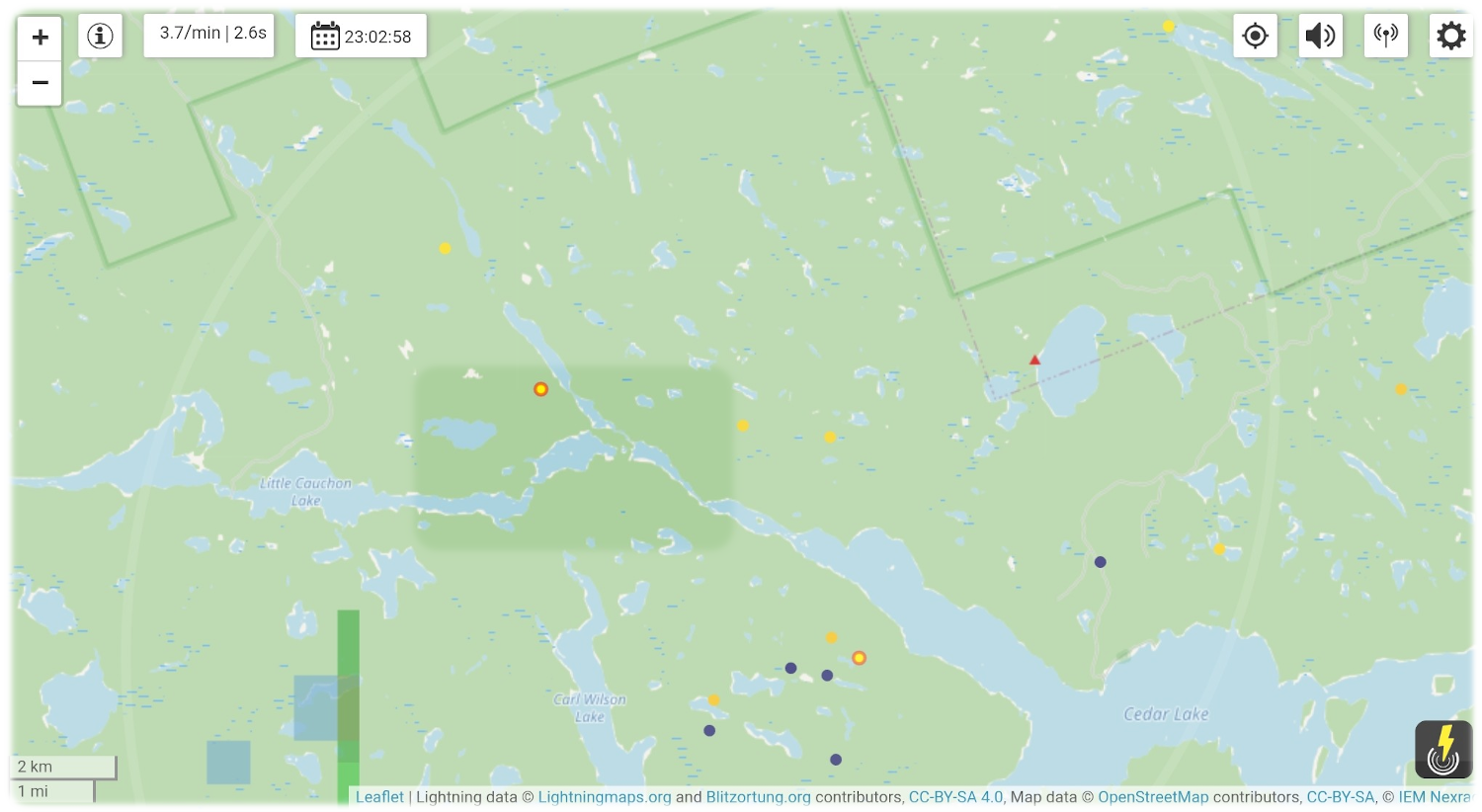
William and I stayed out until he decided that his stomach was OK enough to go back to sleep (about five or ten minutes). Later that night Katherine did wake up, but only for a minute and doesn't remember it at all. It rained most of the night, clearing by morning.
